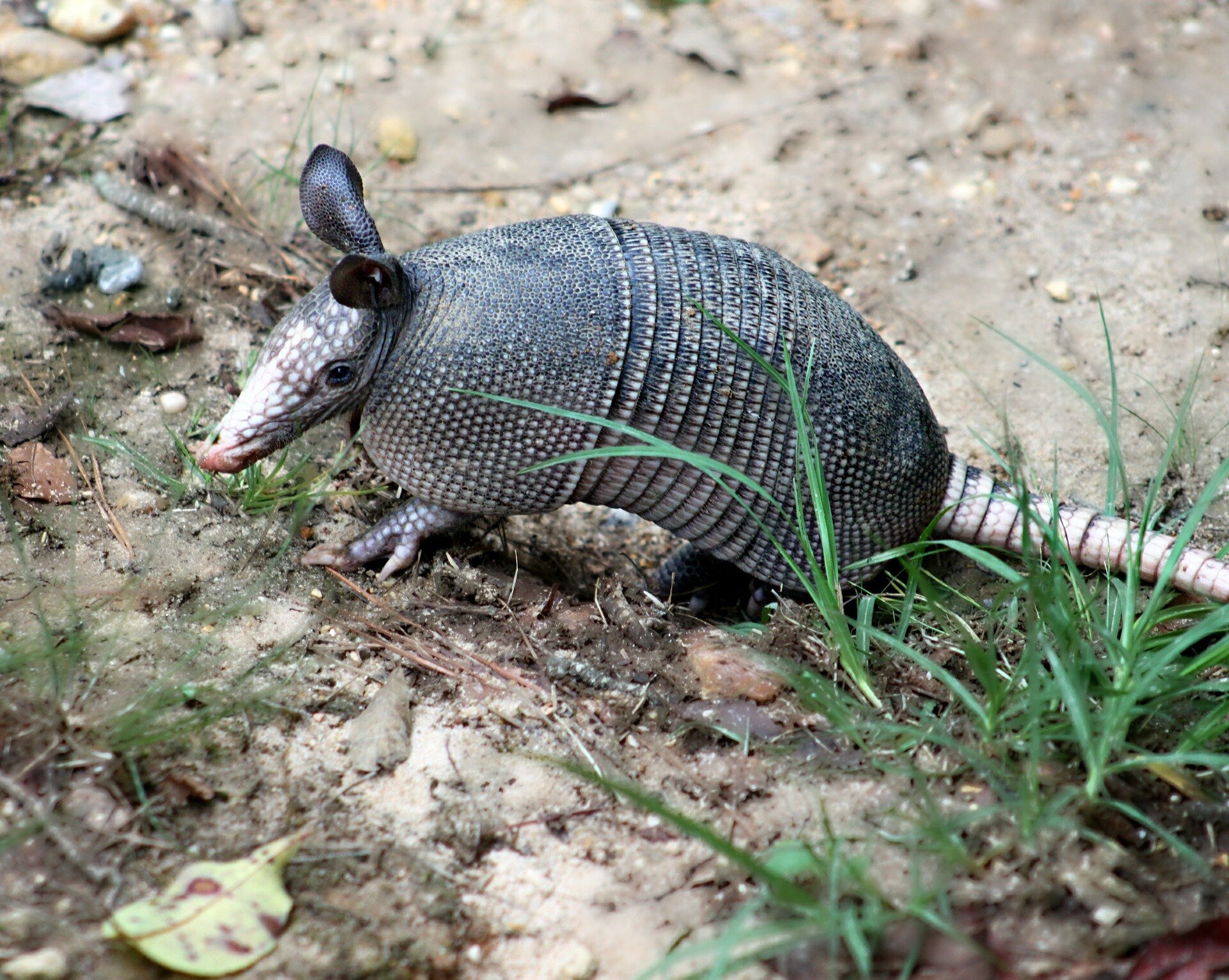Texas: Armadillo World Headquarters
Visitors hope to see an armadillo when visiting Texas.
Every time a visitor arrives from out of state, they want to see an armadillo. After all, the armadillo has been designated the State Small Mammal of Texas.
And yes, there used to be a music venue in Austin named the Armadillo World Headquarters, if you’re wondering.
When I took my kids to visit my home state of Alaska, they expected to see moose and bears. But of course, moose are so common in Alaska by day three, a moose sighting was greeted with an adolescent yawn of indifference.
Finding a bear is a bit more like an armadillo sighting. You know they’re out there but not exactly sure where. And when you find one, sometimes you wish you didn’t.
You can‘t find an armadillo when you want one.
The only place you can be guaranteed to find an armadillo is on the side of a highway. Dead, that is. Notoriously short-sighted, traffic is the largest cause of death for the small armored mammal.
There are 21 species of armadillos, but only one, the nine-banded armadillo, is found in the United States. Before 1850, the armadillo was only found south of the Rio Grande river, but each year, they are moving further north.
Map of the range of the nine-banded armadillo.
Image in the Public Domain created by user:Caliga10.
These animals have been sighted in at least 16 states; however, they’ve become closely associated with Texas which is home to more of them than any other state.
The body temperature of an armadillo is lower than most mammals and they have very little fat. They are found in warmer climates with at least 15 inches of rain each year. With climate change, their territory will continue to expand.
Nine-banded armadillos generally weigh from 5 to 14 pounds, and their body is from 15–23 inches long, not including their 10–20 inch tail. When traveling through the woods, they make a large racket for a small creature, crashing through branches and vines.
Armadillo is a Spanish word meaning little armored one, and their unique outer shell is their most noticeable feature. While the underside is covered with tough skin and coarse hair but no armor. The plates are formed of a type of hardened bone coated with a substance similar to human fingernails. The vertebrae are attached to the shell or carapace.
Armadillos are nearly entirely insectivores.
With their sharp claws, they dig up grubs, beetles, maggots, ants, termites, and worms. Armadillos constant foraging and digging makes them unwelcome guests in yards. In the colder months, they may supplement their diet with small animals and eggs.
They create extensive burrows and sometimes maintain up to 12 burrows in their range. Burrows are roughly 8 inches wide, 7 feet deep, and 25 feet long.
Mama armadillos always birth identical quadruplets.
Breeding occurs in July, and a single egg is fertilized. But the embryo remains in a dormant state for three to four months to ensure young are not born during an unfavorable time. Once the zygote implants in the uterus, a four-month gestation period begins. The fertilized egg splits into four identical embryos. Finally, identical quadruplets are born in March.
The young remain in the burrow, nursing, for about three months. Then, they begin to forage with the mother, eventually leaving after six months to a year.
Armadillos live from seven to 20 years, and the females can produce up to 56 young in that time.
Fun facts about this unusual mammal.
Yes, people can eat armadillos. It’s been termed the poor man’s pork.
A good reason not to eat or touch armadillos is that they may harbor Hansen’s disease, also known as leprosy.
The nine-banded armadillo cannot roll up into a ball.
Armadillos can move quickly, up to 30 mph.
When startled, an armadillo can jump straight up, as much as two or three feet.
Armadillos are good swimmers and can hold their breath up to six minutes.
If you’re fortunate to live in a region with nine-banded armadillos, enjoy this unique animal. They are easy to fence out a yard, so please don’t harm this useful insect eater.
References:
National Wildlife Federation
Wikipedia
The Hays County Master Naturalists- great video here.
Armadillo Online

